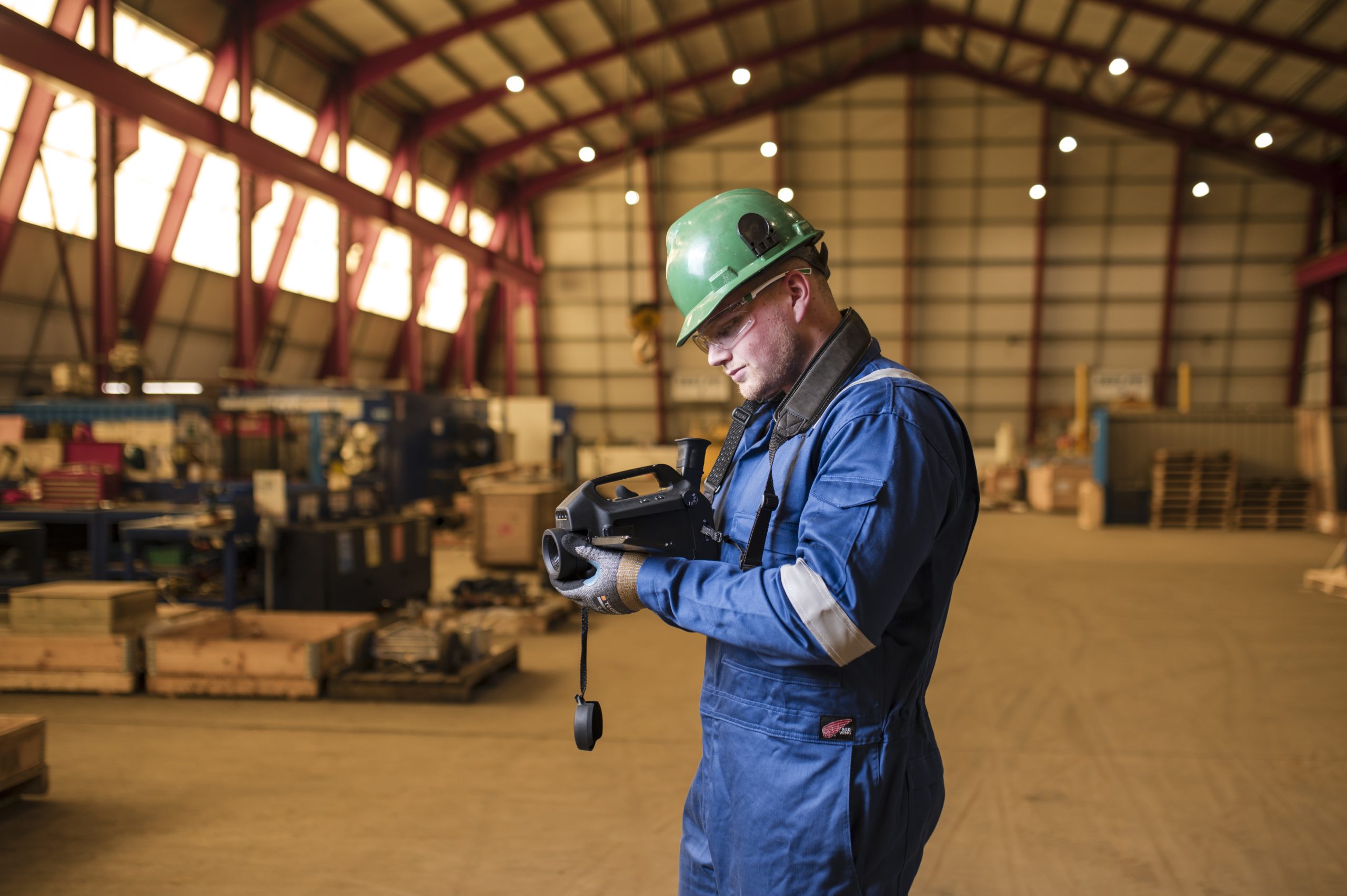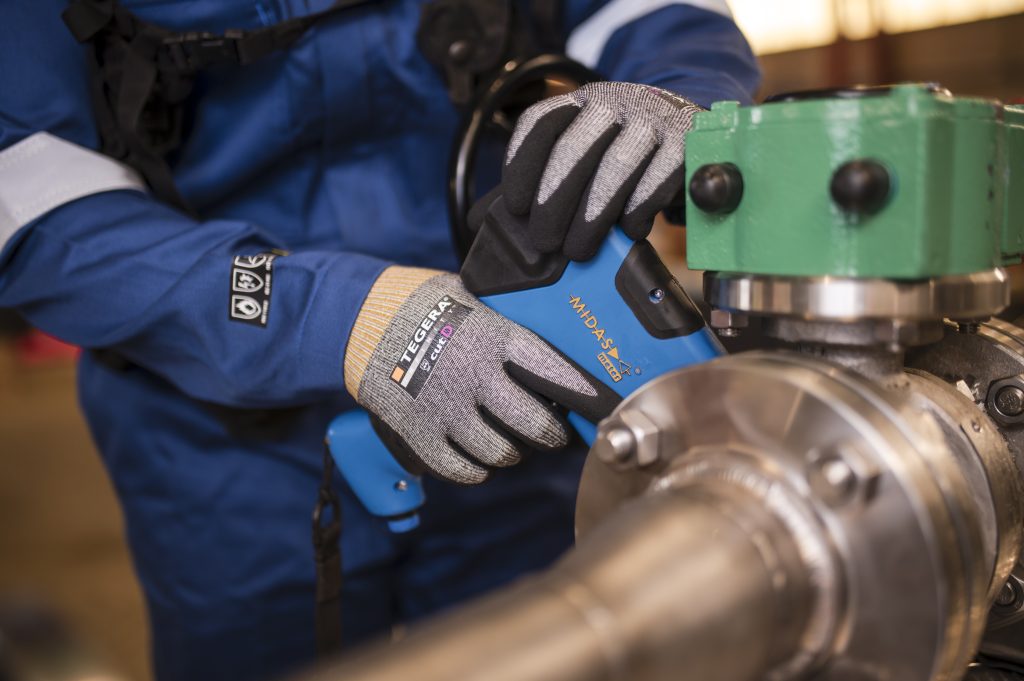Score showcases their proactive approach to leak detection and mitigation, demonstrating how their innovative solutions and collaborative partnerships with customers lead to significant reductions in greenhouse gas emissions and substantial financial benefits.
Text and images by Score

In the pursuit of excellence in engineering and valve management services, diverse challenges and opportunities have been encountered in various markets. This learning journey has provided valuable insights into understanding the needs of customers and designing services that help improve their operations and performance across multiple measures, including safety, environmental impact, quality, efficiency, reliability, sustainability, and profitability.
A collaborative approach is essential when addressing and improving operational challenges. It takes all parties working together with a shared vision and goal to deliver an optimized and sustainable future.
To illustrate the positive impacts of Emissions Elimination services, where the focus is on reducing greenhouse gas emissions and their associated impacts, three compelling case studies are described below. These case studies provide evidence and examples of the commitment and measurable contributions from both an environmental and financial sustainability perspective.
The case studies demonstrate the opportunities associated with proactive leak detection surveys, backed-up by targeted maintenance steps, to eliminate environmental harm and enhance operational efficiency. By using advanced leak detection and quantification technologies within a systematic approach, sources of emissions can be quickly and non-invasively identified and eliminated.
Case Study 1: Eliminating 15kt CO2 e, saving USD 800K annually
An emissions survey was conducted at an onshore LNG facility to identify through-valve leakages contributing to the site’s total emissions volume. The systematic approach and advanced tools, including the MIDAS® Meter, proved instrumental in identifying a 10” 600# normally closed valve
as the main source of significant leakage, despite the complexity of the process system and the substantial number of potential leak sources.
The initial survey results were validated through traditional Pressure Build-Up (PBU) testing procedures and a Differential Absorption LIDAR (DIAL) survey, confirming the severity of the through-valve leakage. Based on these conclusive results, the client decided to isolate the faulty valve completely, leading to a remarkable impact.
From an environmental perspective, 15 kt of CO2 equivalent emissions (per annum) were eliminated, resulting in a production saving of USD 800 thousand. This success story demonstrates the significant opportunities associated with proactive leak detection surveys, supported by targeted maintenance steps, to eliminate environmental harm and enhance operational efficiency.
The expertise in finding and mitigating the valve leak not only reduced the process’ environmental impacts but also delivered substantial cost savings for the client. By utilizing advanced leak detection and quantification technologies within a systematic approach, the source of emissions was quickly, non-invasively, and positively identified and eliminated, showcasing a commitment to sustainability and operational excellence.

Case Study 2: Mitigating 66kt CO2e, providing a USD 5 million benefit
A customer contacted the company regarding a corroded actuator fitted on a control valve on their offshore production platform. The customer recognized the potential risks posed by undiagnosed through-valve leakages and sought solutions to identify and mitigate these risks.
An in-situ Acoustic Emissions (AE) survey using MIDAS® Meter equipment was proactively recommended. The survey findings revealed significant process leakage that required immediate action. By promptly identifying, quantifying, and mitigating the valve leakage, the environmental impacts were reduced, and substantial business benefits were generated for the client.
The reduction in CO2 equivalent emissions, amounting to 66 kt per annum (equivalent to the emissions from approximately 14,348 cars in one year), translated into a significant USD 5 million in annual savings for the customer. This case study emphasizes the strategic value of targeted, value-based maintenance driven by advanced leak detection technologies, which safeguard environmental integrity and maximize financial returns for process owners. This success story highlights the importance of collaborative work with customers and a clear focus on jointly implementing maintenance strategies that optimize asset performance and minimize environmental impacts. The combined working experiences, expertise, and innovative solutions help customers achieve their sustainability goals while enhancing operational efficiency and profitability.
Case Study 3: Preventing 3.5 tonnes of methane gas emissions
In a third scenario, a critical issue was identified at a client facility where a ball valve had a significant fugitive emission (a methane gas leak to atmosphere). With safety and environmental concerns being paramount, an innovative in-situ repair solution was swiftly implemented. By establishing a temporary isolation barrier using a specialist sealant, 3.5 tonnes of methane gas emissions were prevented in the two-month period prior to planned maintenance.
The temporary repair solution ensured personnel safety and maintained uninterrupted production, averting potential financial losses and significant regulatory compliance impacts (penalties) for the customer. During the next available planned outage window, a more permanent leak-mitigating maintenance solution was applied. This example highlights the commitment to delivering effective solutions tailored to meet both short- and long-term client needs.
Proactive work in addressing in-service valve leaks demonstrates a commitment to sustainability and operational excellence. By leveraging advanced technologies, proactive maintenance strategies, and collaborative partnerships, clients are enabled to achieve their operational goals and objectives while continuously driving sustainable growth.

Continuous improvements in emissions elimination
Today, Score is evolving its Emissions Elimination services provision through the powers of digital transformation. The company has partnered with asset55, a leading software engineering technology company, to develop a fully integrated software platform that supports optimal data-driven planning, execution, reporting, and control within complex and asset-rich fluids processing environments.
Score’s Emissions Elimination services are fully digitized and integrated within asset55’s Operate software, delivering best-in-class emissions management and mitigation solutions. The turnkey service provides customers with onsite support to identify, prioritize, control, manage, and eliminate emissions at the source. Score provides a seamless and efficient user experience, ensuring customers reach their sustainability goals at the earliest possible opportunity. With this innovative software and Score’s multi-disciplined and skilled operators combined services model, the company enables compliance with all relevant local regulatory requirements, such as OGMP 2.0, the EU Methane Emissions Regulation, and the USA’s Methane Emissions Reduction Action Plan. Score’s bespoke software solution automates the generation of reports submitted to regulators and provides intuitive dashboards to monitor asset performance and repairs throughout the asset lifecycle. Most importantly, these tools are used to prioritize and eliminate methane emissions.
Score’s innovative predictive analytics algorithms leverage failure mode data to highlight potential emission sources at the asset component level. These insights enable customers to predict and prevent emissions in a cost-effective manner, rather than reacting to the consequences of in-service failures after they occur.
Driving sustainable growth through proactive intervention
The convergence of environmental responsibility and financial viability lies at the heart of Score’s approach to supporting customer operations. By leveraging advanced technologies, proactive maintenance strategies, and strategic decision-making, Score helps and empowers operators to find and mitigate leaks promptly while unlocking significant value. Since every leak path grows total emissions volumes over time, the earlier the engagement, the bigger the positive outcomes that can be delivered.
The emissions elimination journey that Score is on with its customers emphasizes the transformative impact of strategic collaboration, technological innovation, and decisive action to deliver a greener, more sustainable future for process owners and operators worldwide. Moving forward, Score remains steadfast in its commitment to pioneering solutions that push the boundaries of the possible, propelling the industry towards a low-carbon, high-efficiency energy landscape.

About Score
Score is the world’s future-focused provider of advanced engineering technology services in the fields of valve and emissions management, gas turbines, surface technologies, aerospace, and beyond, with the power and agility to ensure daily operational excellence and long-term success.
For more information, email eep@score-group.com.
About this Technical Story
This Technical Story is an article from our Valve World Magazine, May 2024 issue. To read other featured stories and many more articles, subscribe to our print magazine. Available in both print and digital formats. DIGITAL MAGAZINE SUBSCRIPTIONS ARE NOW FREE.
“Every week we share a new Technical Story with our Valve World community. Join us and let’s share your Technical Story on Valve World online and in print.”

